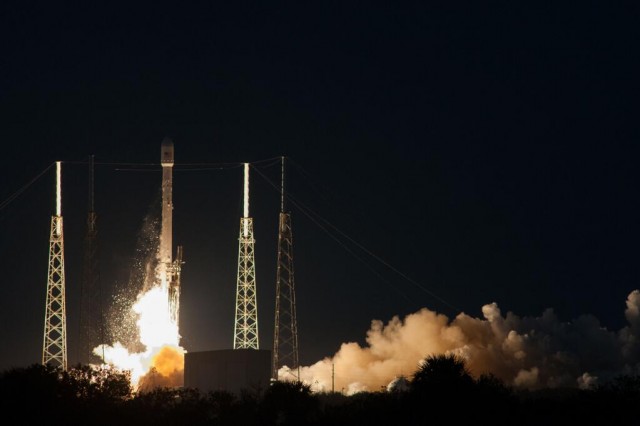
Early this evening in Florida, space transport company SpaceX successfully launched its Falcon 9 rocket on a trajectory to place a satellite in geosynchronous orbit. The success comes on the third attempt, with one of the previous tries getting as far as engine ignition before shutting down. If the remaining maneuvers are completed successfully, the launch will place a commercial communications satellite into a geosynchronous orbit that will keep it positioned above Asia—and represent the first launch of its type for SpaceX.
The company had been attempting to hit this milestone for about a week. During the first launch window, two different anomalous readings from on-board sensors caused the controllers to stop the countdown, restart it, and stop it again before running out of time. In the second, the Falcon 9 got as far as firing its engines—with less than a second to liftoff—before computers sensed insufficient power and shut everything down.
The problem in that case was with the small rocket motor used to drive the pump that pushes fuel into the primary engine (a device called a gas generator). Once everything had cooled off, the company engineers cleaned eight of the gas generators in place and replaced the ninth. That seemed to do the trick, as the countdown went off without a hitch this evening.
The launch placed the payload and second stage engine in a parking orbit, from which they'll need to complete additional maneuvers before reaching a geosynchronous orbit. If those work successfully, it will mark a major step for the company, as geosynchronous capabilities open up a lot of business opportunities for it—having a satellite parked over a single point on Earth has a lot of commercial value.
reader comments
70